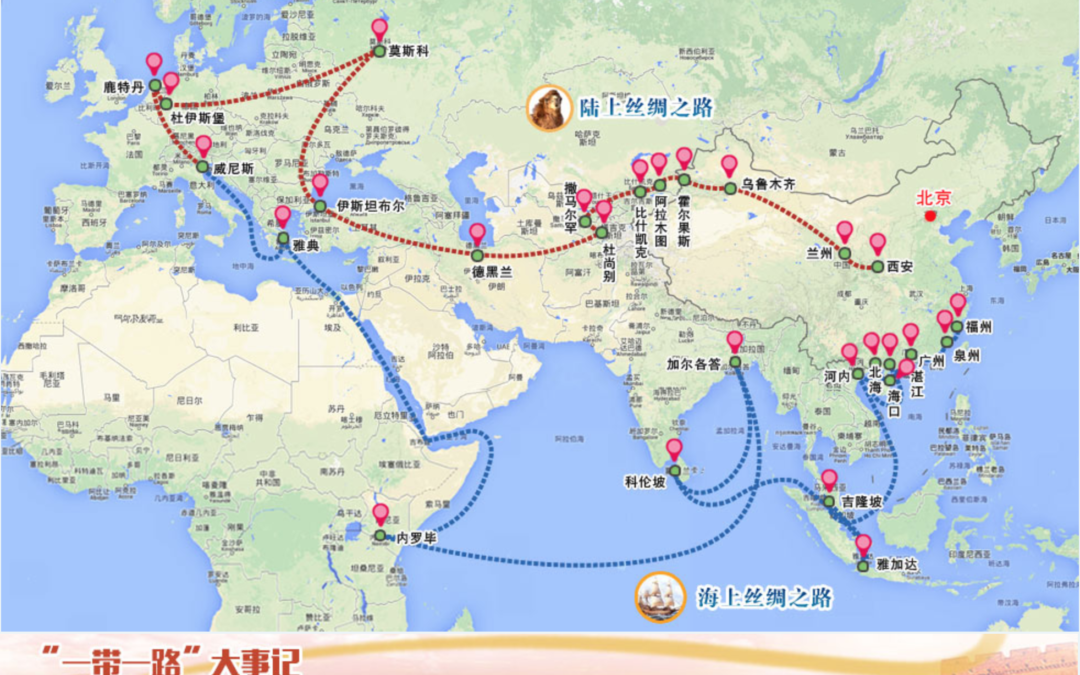When Chinese President Xi Jinping visited Central Asia and Southeast Asia in September and October of 2013, he raised the initiative of jointly building the Silk Road Economic Belt and the 21st-Century Maritime Silk Road (hereinafter referred to as the Belt and Road Initiative), which have attracted close attention from all over the world.
(National Development and Reform Commission, Ministry of Foreign Affairs, and Ministry of Commerce of the People’s Republic of China, with State Council authorization, ‘Vision and Actions on Jointly Building Silk Road Economic Belt and 21st-Century Maritime Silk Road’, 28 March 2015)
President Xi Jinping laid out the concept of the Belt & Road Initiative (BRI) during his first visit to central and south east Asia in 2013. On 28 March 2015, the National Development and Reform Commission (NDRC) and the Ministry of Foreign Affairs, together with the Ministry of Commerce (MOFCOM) published the ‘Vision and Action to Promote the Co-Construction of a “Silk Road Economic Belt” and a “21st-Century Maritime Silk Road”’ under the authority of the State Council (B&R Document). In 2017, at the inaugural Belt and Road Forum, another explanatory policy document, “Building the Belt and Road: Concept, Practice and China’s Contribution” (B&R CPCC), was issued by the Office of the Leading Group for the BRI. The B&R CPCC is explicit in stating the cooperation goals, a focus on bilateralism, collaboration with other developed countries, utilization of existing multilateral institutions among other principles.
China’s BRI is the largest infrastructure investment effort in the World. Some argued that it will replace the Washington Consensus and the international ordering that has anchored global trade since Second World War. This is a premature assertion. What is clear, however, is that the way the investment system works will be different to either the regionally integrated market system of the EU, with its unified legal jurisdiction, or the open, multinational approach overseen by the WWII Breton Woods institutions, which has relied on a legal system based on treaties, institutions and dispute resolution system that includes legal provisions to give international investors and host states a means of resolving disputes and enforcing awards, ranging from international arbitration clauses to bilateral intergovernmental treaties.
Malik R. Dahlan,‘ Deconstructing the Belt and Road Initiative: How China is Shaping Global Investment Law and Policy’, Forthcoming 2020
Malik R. Dahlan, ‘ Dispute Regulation in the Institutional Development of the Asian Infrastructure Investment Bank: Establishing the Normative Legal Implications of the Belt and Road Initiative ’, Brill | Nijhoff, AIIB Yearbook of International Law, Volume: 2, 121-144, 2019
Malik R. Dahlan, ‘ Dimensions of the New Belt & Road International Order: An Analysis of the Emerging Legal Norms and a Conceptionalisation of the Regulation of Disputes ’, Beijing Law Review, Volume: 9, 87-112, 2018


